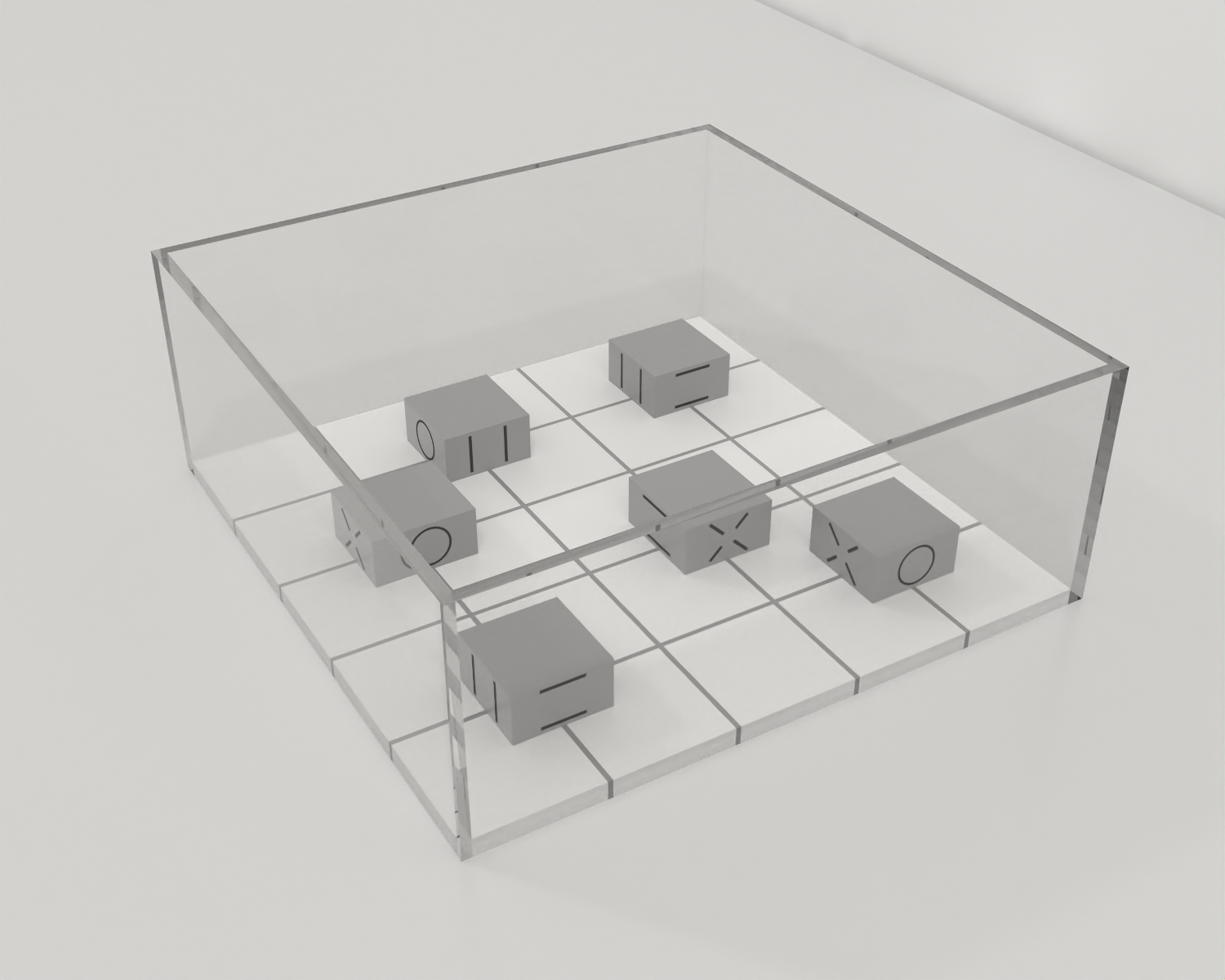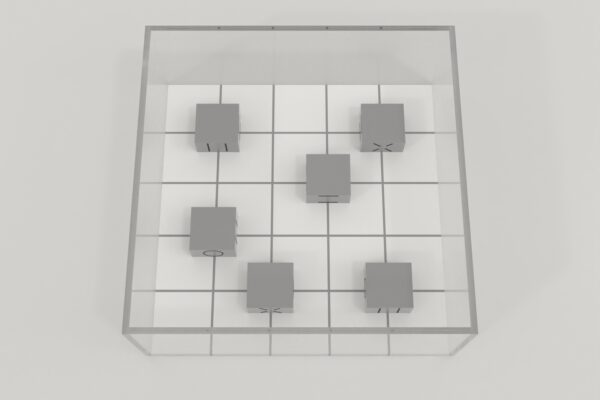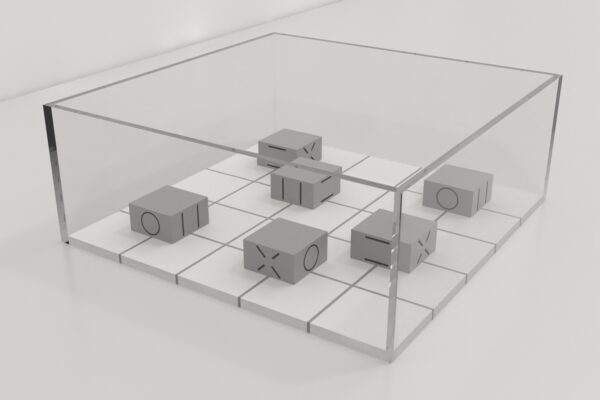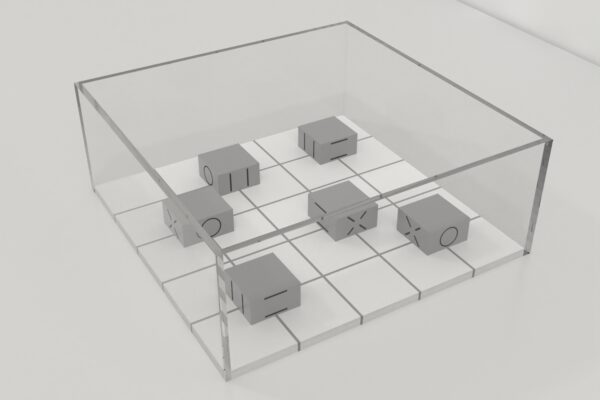Developed by Wood, Glynn, and Morton, the Rodent OX-Maze is used to assess learning and memory in rodents. It gets its name from the ‘O’ and ‘X’ symbols drawn onto black boxes placed within the maze.
The maze is essentially an open arena with grid lines that produce equal-sized squares on the arena’s floor. The black boxes placed within the arena contain holes on each block side, which are used for placing food rewards.




